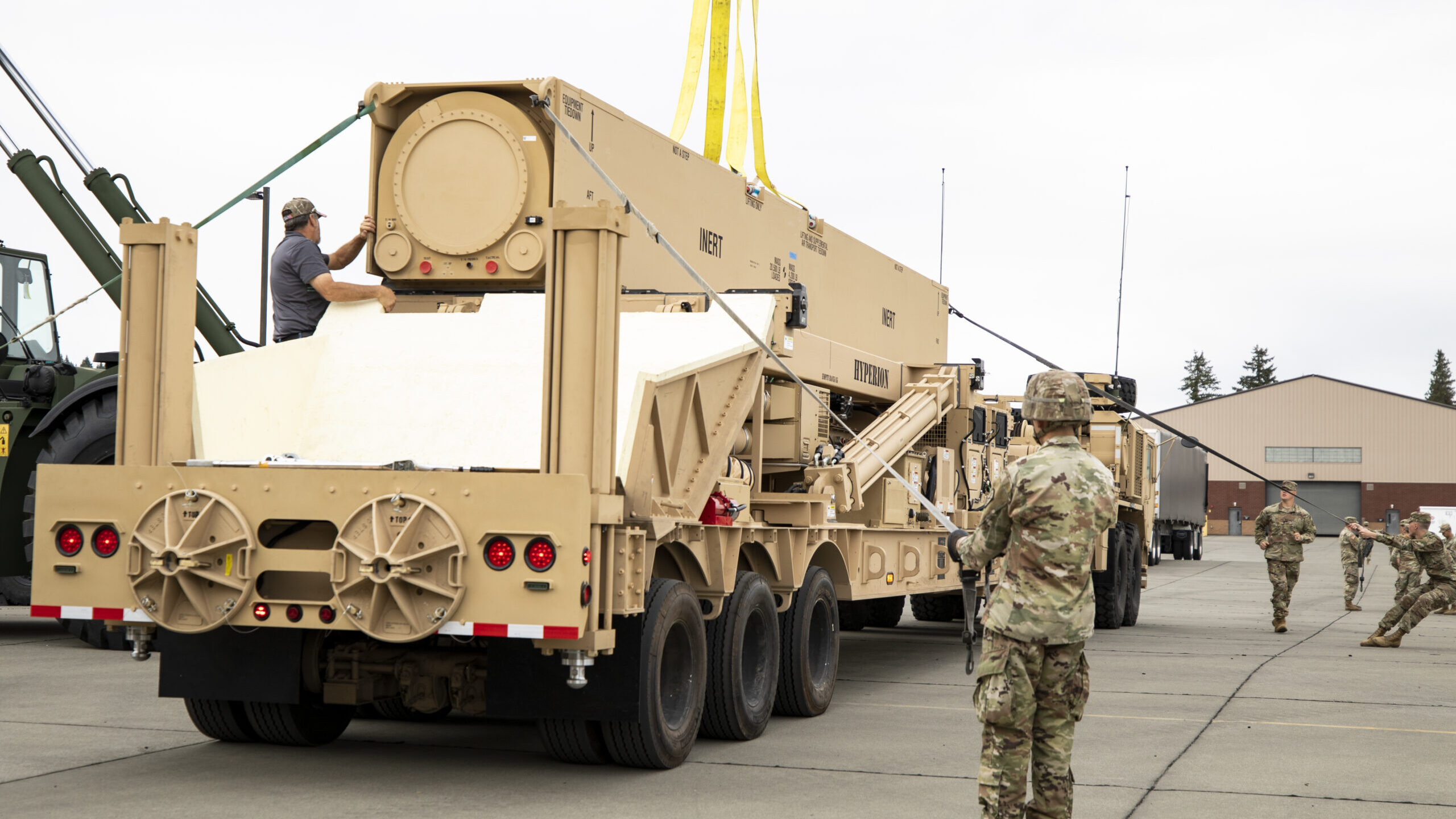
Lockheed Martin delivered critical ground equipment for its Long Range Hypersonic Weapon (LRHW), also known as Dark Eagle hypersonic missiles, to the U.S. Army today.
The delivery was part of a rapid, multi-year hypersonic weapons development program supporting the service’s focus on long-range precision fires.
In a ceremony held at Joint Base Lewis-McChord today, the U.S. Army and industry team celebrated this delivery of ground equipment, including the battery operations center and four transporter erector launchers.
The Lockheed Martin LRHW contract was originally awarded in 2019. Future flight tests are slated for fiscal year 2022-2023, and the program remains on track.
Pictures posted by Joint Base Lewis-McChord’s public affairs office yesterday show only the launchers, which had not previously been seen, being delivered. These are mounted on modified M870 trailers and will be towed by Oshkosh M983A4 tractor trucks, which are variants of the Heavy Expanded Mobility Tactical Truck (HEMTT).
The Army has revealed other details about the LRHW battery previously. “It’s going to be a battery of four launchers, two missiles per for basic load of eight,” Bob Strider, Deputy Director of the Army Hypersonic Project Office, said at the annual Space and Missile Defense Symposium in August. “It’s going to be a Battery Operations Center — that’s our C2 system that is based against an AFATDS, the [Advanced] Field Artillery Tactical Data System …. with a support vehicle.”
“This will be a road-mobile system, which is critical, the ability to move around the battlefield,” he added.
The name Dark Eagle was given to the missiles by the Army in August.
Development of the LRHW has involved the Army and the Navy, with the maritime branch using the same hardware in its Intermediate-Range Conventional Prompt Strike (IRCPS) weapon. While the launcher platforms for both are different, the missiles themselves are the same, including a Common Hypersonic Glide Body (C-HGB) and rocket booster.
The C-HGB is expected to reach a maximum speed of Mach 17, and will be able to hit targets of at least 2,700 km. It will reportedly be able to make more unpredictable maneuvers, compared to traditional ballistic missiles, complicating the enemy’s ability to defend against it.
